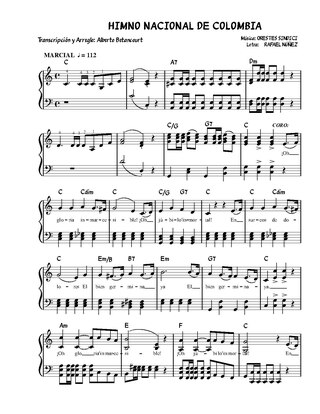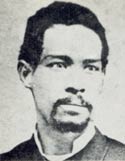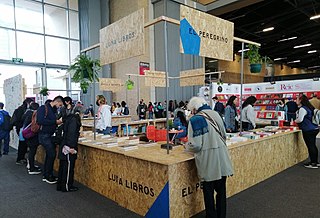Related Research Articles

Cartagena, known since the colonial era as Cartagena de Indias, is a city and one of the major ports on the northern coast of Colombia in the Caribbean Coast Region, along the Caribbean sea. Cartagena's past role as a link in the route to the West Indies provides it with important historical value for world exploration and preservation of heritage from the great commercial maritime routes. As a former Spanish colony, it was a key port for the export of Bolivian silver to Spain and for the import of enslaved Africans under the asiento system. It was defensible against pirate attacks in the Caribbean. The city's strategic location between the Magdalena and Sinú rivers also gave it easy access to the interior of New Granada and made it a main port for trade between Spain and its overseas empire, establishing its importance by the early 1540s.

Barranquilla is the capital district of the Atlántico department in Colombia. It is located near the Caribbean Sea and is the largest city and third port in the Caribbean coast region; as of 2018, it had a population of 1,206,319 making it Colombia's fourth-most populous city after Bogotá, Medellín, and Cali.

Lebanese Colombians are Colombians of Lebanese descent. Most of the Lebanese community's forebears immigrated to Colombia from the Ottoman Empire in the late 19th and early 20th centuries for economic, political and religious reasons. The first Lebanese moved to Colombia in the late nineteenth century. There was another wave in the early twentieth century. It is estimated that over 10,000 Lebanese immigrated to Colombia from 1900 to 1930.

The National Anthem of the Republic of Colombia is the official name of the national anthem of Colombia. It was originally written as a poem in 1850 by future President Rafael Núñez as an ode to celebrate the independence of Cartagena. The music was composed by Italian-born opera musician Oreste Síndici, at the request of Bogotan actor José Domingo Torres, during the presidency of Núñez, and with lyrics refined by Núñez himself, it was presented to the public for the first time on 11 November 1887. The song became very popular and was quickly adopted, albeit spontaneously, as the national anthem of Colombia.

The artistic gymnastics competition of the 2006 Central American and Caribbean Games was held in Cartagena, Colombia, from 15–30 July 2006.
The Central American and Caribbean Cross Country Championships was an annual Cross country running competition organized by the CACAC for athletes representing the countries of its member associations. The competition was established in 1983 following a proposal of Wallace Williams from the Virgin Islands, then secretary of the CACAC. The rationale was that also smaller countries without adequate athletics' facilities could host such an event. The approval for the competitions' implementation was given during the 1982 CACAC meeting in Havana. The first championships were to take place in 1983 on the Virgin Islands, but because of the US invasion of Grenada, the event was postponed and relocated to Puerto Rico.
La Colosa is a porphyry gold mine in Colombia. The mine is located in Cajamarca, Tolima on the eastern flanks of the Central Ranges of the Colombian Andes. La Colosa has estimated inferred resources of 24,000,000 ounces (680 t) of gold, grading at 0.9 to 1.0 milligram per kilogram of Au. In 2015, the mine produced 1,810.35 grams (63.858 oz) of gold. In 2016, 88.4% of the mining value in Colombia came from coal and gold combined, with nickel following at 9.3%.
The following is a timeline of the history of the city of Cartagena de Indias, Colombia.

Cumbia is a folkloric genre and dance from Colombia.

Carl Henrik Langebaek Rueda is a Colombian anthropologist, archaeologist and historian. He has been contributing on the knowledge of archaeological evidences, especially the Herrera Period and the Muisca. Langebaek was vice-chancellor for academic affairs at Universidad de los Andes and speaks Spanish and English.

Candelario Obeso was a Colombian poet. He is known as a precursor of the Poesía Negra y oscura in Colombia.
Ramsés Ramos is a Colombian actor.

Karoll Iván Márquez Mendoza, is a Colombian actor and singer, known for his starring role in the Caracol Televisión soap opera Oye bonita. He is also known for his roles in Un sueño llamado salsa (2010) and Amor de Carnaval (2012).
Miss Colombia 2021 was the 68th Miss Colombia pageant, held at the Julio Cesar Turbay Ayala Convention Center in Cartagena de Indias, Colombia on November 14, 2021.

Verónica del Socorro Alcocer García is a Colombian philanthropist and the current First Lady of Colombia since 2022, as the third wife of President Gustavo Petro.
Luis Felipe Jaspe del Real Franco was a Colombian architect and portrait painter.

The International Book Fair of Bogotá, also known as FILBo, is a book fair held in the city of Bogotá, Colombia that takes place annually in the convention center of Corferias. In this event, all the actors of the productive chain of books meet, and for two weeks readers, authors, editors, style editors, distributors, agents, and booksellers participate in this Colombian longstanding cultural event and the second-largest book fair in Latin America.
Yamile Lujan Dajud Zuluaga is an Argentine-Colombian model and beauty pageant titleholder who was crowned Miss Universe Argentina 2023. She represented Argentina at the Miss Universe 2023 competition.
References
- ↑ Sader, Marta (25 August 2018). "La ciudad IDEAL acaba de nacer, y se llama SERENA DEL MAR". Architectural Digest España (in European Spanish). Retrieved 21 October 2024.
- ↑ Sader, Marta (25 August 2018). "La ciudad IDEAL acaba de nacer, y se llama SERENA DEL MAR". Architectural Digest España (in European Spanish). Retrieved 21 October 2024.
- ↑ Sader, Marta (25 August 2018). "La ciudad IDEAL acaba de nacer, y se llama SERENA DEL MAR". Architectural Digest España (in European Spanish). Retrieved 21 October 2024.
- ↑ Semana (24 March 2024). "La Ciudad Soñada: el impresionante desarrollo urbano que se construye al norte de Cartagena". Semana.com Últimas Noticias de Colombia y el Mundo (in Spanish). Retrieved 21 October 2024.
- ↑ "Hospital Serena del Mar, el mejor del Caribe en 2024 según Newsweek". www.eluniversal.com.co (in Spanish). 1 March 2024. Retrieved 21 October 2024.
- ↑ "Hospital de Serena del Mar, uno de los mejores de Colombia". www.eluniversal.com.co (in Spanish). 10 May 2024. Retrieved 21 October 2024.
- ↑ "Centro Hospitalario Serena del Mar se une a hospital de Nueva York". www.eluniversal.com.co (in Spanish). 10 June 2022. Retrieved 21 October 2024.
- ↑ Surgery, Hospital for Special. "HSS Extends Global Network to Colombia with New Collaboration". www.prnewswire.com. Retrieved 21 October 2024.
- ↑ S.A.S, Editorial La República (9 February 2019). "Serena del Mar se asoció con General Electric para construcción del hospital". Diario La República (in Spanish). Retrieved 21 October 2024.
- ↑ S.A.S, Editorial La República (10 May 2018). "Universidad de los Andes inauguró su sede Caribe en Cartagena". Diario La República (in Spanish). Retrieved 21 October 2024.
- ↑ "La Terminal del Norte operará desde hoy en Serena del Mar". www.eluniversal.com.co (in Spanish). 21 November 2022. Retrieved 21 October 2024.
- ↑ Economía, Redacción (25 May 2018). "Celsia comercializará energía en proyecto Serena del Mar en Cartagena". ELHERALDO.CO (in Spanish). Retrieved 21 October 2024.
- ↑ Semana (24 March 2024). "La Ciudad Soñada: el impresionante desarrollo urbano que se construye al norte de Cartagena". Semana.com Últimas Noticias de Colombia y el Mundo (in Spanish). Retrieved 21 October 2024.
- ↑ Semana (30 July 2024). "¿Por qué invertir en propiedades frente al mar en Cartagena?". Semana.com Últimas Noticias de Colombia y el Mundo (in Spanish). Retrieved 21 October 2024.
- ↑ builders, Anugraha (29 February 2012). "Anugraha Builders and Developers and Projects". SciVee. Retrieved 21 October 2024.
- ↑ S.A.S, Editorial La República (3 November 2022). ""El proyecto Serena del Mar está jalonando el desarrollo de Cartagena y del Caribe"". Diario La República (in Spanish). Retrieved 21 October 2024.
- ↑ S.A.S, Editorial La República (3 November 2022). ""El proyecto Serena del Mar está jalonando el desarrollo de Cartagena y del Caribe"". Diario La República (in Spanish). Retrieved 21 October 2024.
- ↑ Semana (24 March 2024). "La Ciudad Soñada: el impresionante desarrollo urbano que se construye al norte de Cartagena". Semana.com Últimas Noticias de Colombia y el Mundo (in Spanish). Retrieved 22 October 2024.
- ↑ "A city to grow into". The Economist. ISSN 0013-0613 . Retrieved 21 October 2024.
- ↑ "A city to grow into". The Economist. ISSN 0013-0613 . Retrieved 21 October 2024.
- ↑ Cepeda, Laura Sael Velasquez (19 June 2020). "Serena del Mar evoluciona a pasos agigantados". El Tiempo (in Spanish). Retrieved 21 October 2024.
- ↑ S.A.S, Editorial La República (14 March 2020). "Se concretó el acuerdo final entre Serena del Mar y el Club Campestre". Diario La República (in Spanish). Retrieved 21 October 2024.
- ↑ "A city to grow into". The Economist. ISSN 0013-0613 . Retrieved 21 October 2024.
- ↑ "Serena del Mar". www.eltiempo.com. Retrieved 21 October 2024.
- ↑ Cepeda, Laura Sael Velasquez (19 June 2020). "Serena del Mar evoluciona a pasos agigantados". El Tiempo (in Spanish). Retrieved 21 October 2024.
- ↑ "Serena del Mar". www.eltiempo.com. Retrieved 21 October 2024.
- ↑ S.A.S, Editorial La República (3 November 2017). "Serena del Mar, proyecto urbanístico más grande de Cartagena". Diario La República (in Spanish). Retrieved 21 October 2024.
- ↑ Semana (20 February 2015). "El hombre detrás del éxito del Grupo Haime". Semana.com Últimas Noticias de Colombia y el Mundo (in Spanish). Retrieved 21 October 2024.
- ↑ "Más 1.500 unidades de vivienda se vendieron en Serena del Mar en 2022". www.eluniversal.com.co (in Spanish). 16 December 2022. Retrieved 21 October 2024.
- ↑ Semana (20 February 2015). "El hombre detrás del éxito del Grupo Haime". Semana.com Últimas Noticias de Colombia y el Mundo (in Spanish). Retrieved 21 October 2024.
- ↑ S.A.S, Editorial La República (3 November 2022). ""El proyecto Serena del Mar está jalonando el desarrollo de Cartagena y del Caribe"". Diario La República (in Spanish). Retrieved 21 October 2024.
- ↑ "Dos grandes proyectos para celebrar 10 años de Fundación Serena del Mar, en Zona Norte de Cartagena". www.eluniversal.com.co (in Spanish). 18 September 2024. Retrieved 21 October 2024.
- ↑ "Dos grandes proyectos para celebrar 10 años de Fundación Serena del Mar, en Zona Norte de Cartagena". www.eluniversal.com.co (in Spanish). 18 September 2024. Retrieved 21 October 2024.
- ↑ "Dos grandes proyectos para celebrar 10 años de Fundación Serena del Mar, en Zona Norte de Cartagena". www.eluniversal.com.co (in Spanish). 18 September 2024. Retrieved 21 October 2024.